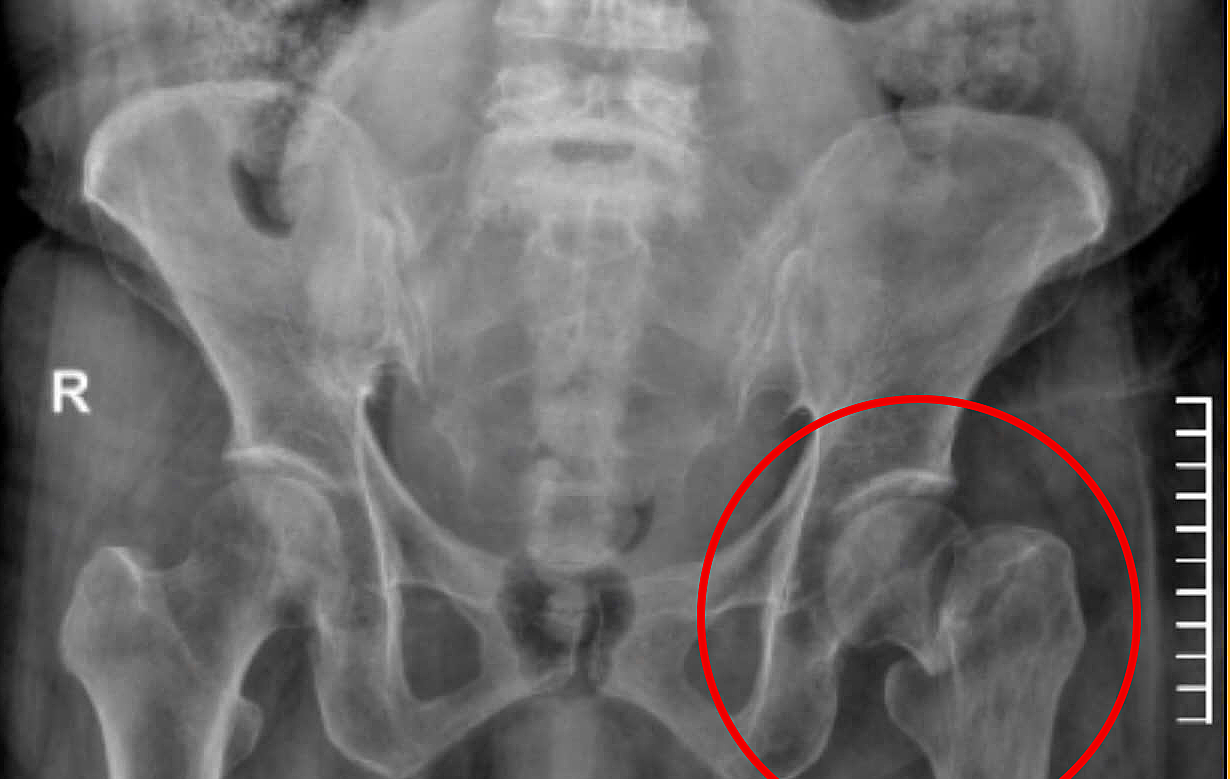After the initial fall, Hoa attempted to stand up but fell two more times. She was then taken to Tam Anh General Hospital in Ho Chi Minh City. Her left leg was fractured, turned outwards, and almost immobile.
 |
X-rays revealed a fracture in Hoa's left femur. Photo: Hospital provided |
Doctor Ho Duc Loc, from the Orthopedic Trauma Center, explained that the consecutive falls caused significant impact and a complete fracture to Hoa's femur and hip, necessitating immediate surgery.
Hoa had a history of complex coronary artery disease, increasing the risk of cardiac events during and after surgery. Her long-standing diabetes and high blood sugar levels also posed a risk of delayed wound healing. Furthermore, her severe osteoporosis meant that any surgical misstep could lead to further fractures.
Orthopedic trauma, endocrinology, and cardiology specialists consulted and decided to quickly stabilize Hoa's medical conditions to minimize the risk of complications. The surgical team utilized TraumaCad software to measure her bone size and select the most suitable hip prosthesis. This streamlined the surgery, reduced blood loss and cardiovascular strain, and lessened the chance of complications.
During the procedure, surgeons accessed the hip joint through a small incision on the outer edge of the back of her thigh. They removed the fractured bone fragments and damaged tissue before implanting the artificial hip. This technique preserved the piriformis muscle, crucial for leg lifting, hip rotation, and foot movements. As a result, Hoa experienced faster recovery, improved mobility, and a significantly reduced risk of dislocation, a common complication in hip replacement surgery. The entire process, from admission to surgery completion, took less than 24 hours.
The day after surgery, Hoa reported a significant reduction in pain and began on-site physiotherapy. The following day, she was able to walk with assistance. She is expected to make a full recovery and walk normally within 1-2 months. Due to her underlying conditions, she will require follow-up appointments for both her fracture and other medical issues after discharge.
 |
Hoa undergoing physiotherapy before being discharged. Photo: Hospital provided |
Doctor Loc highlighted that femoral neck fractures are common, accounting for approximately 20% of hip fractures. Without surgery, patients face a 25% mortality risk within the first year due to complications such as pneumonia, urinary tract infections, pressure ulcers, and blood clots.
Osteoporosis is a leading cause of fractures in older adults. Doctor Loc recommends preventative measures like osteoporosis screening and regular health check-ups. He advises maintaining bone and joint health through moderate exercise, a balanced diet, and adequate vitamin D and calcium intake.
Phi Hong












